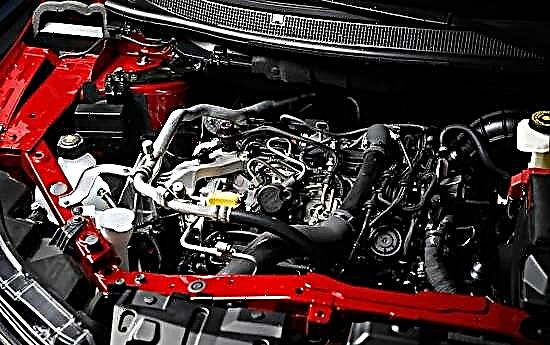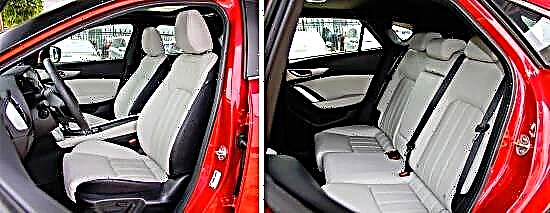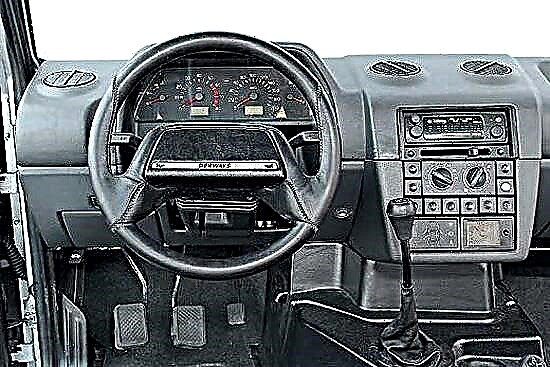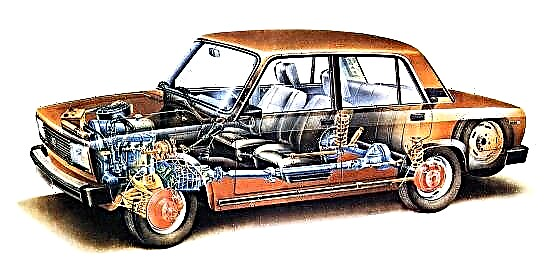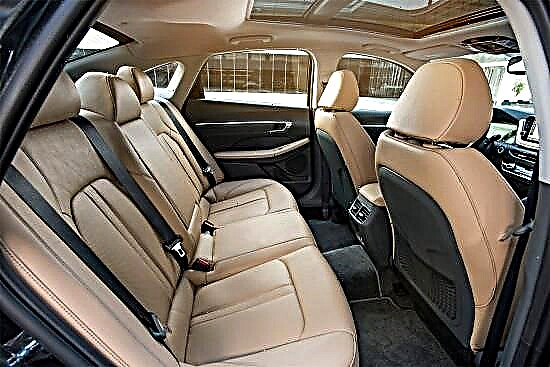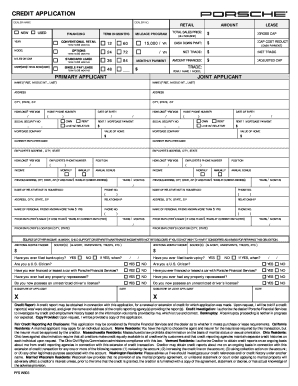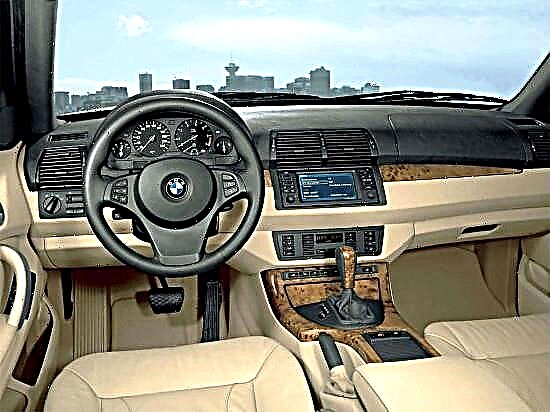The car with the E53 index is the all-wheel drive crossover of the first generation of the X5 model, which began production in 1999. The "first copy", as is customary in the automotive world, was unveiled at the Detroit Auto Show, marking the beginning of a completely new approach to car models in this class. Many car owners positioned it as an SUV, although the creators of the BMW X5 E53 themselves called this car a crossover with increased cross-country ability and sport-class functions.
The Germans, creating the "first x-fifth", did not hide that they wanted to "surpass" Range Rover, having received the same powerful and respectable, but more modernized car. Initially, the X5 was produced at its own factory located in Bavaria. Then, after the takeover of the Rover plant by BMW, the production of cars for the American market began. Thus, this car of the SAV class simultaneously mastered two territories: Europe and America.

German auto giant BMW, in principle, could not produce a bad car. The vaunted German quality, precision engineering of electronics and all mechanisms of the new line were intended to raise the German brand to a new level. BMW X5 (E53) was designed for travel on any road surface and light off-road, moreover, this car was assigned the "sports car" class.

The first generation machine received a platform in the form of a supporting structure body. It was "stuffed" with electronics, endowed with all-wheel drive, increased ground clearance and independent suspension.
Also, the X5 E53 distinguished itself by a spacious and stylish interior without unnecessary nuances, at the same time luxurious, corresponding to the price of a car, trim. Classic BMW inserts made of wood and Bavarian leather, adjustable steering wheel, orthopedic seats, high seating position, climate control, an electric sunroof, a large trunk designed for decent loads - all this was included in the standard package.
In many ways, the Germans managed to catch up and overtake the Range Rover: the solid impressive exterior of the car, alloy wheels, the back door of two doors were clearly "licked" from the SUV. From there, in the X5 E53 came some useful functions, such as adjusting and holding the speed on the descent. The resemblance to the legendary car ended there.
Specifications. The first generation of this crossover has undergone several changes, both in appearance and design. It seems as if the German manufacturer constantly wanted to bring the car to perfection, regardless of the results already achieved. Initially, the BMW X5 entered the market in three variants:
- with a gasoline in-line engine (6 cylinders);
- with a V-shaped aluminum engine (8 cylinders), which has a powerful improved self-adjusting cooling system, continuous injection mode, digital electronics; thanks to the powerful engine, the acceleration to the first hundred was just over 7 seconds. Engine power reached 286 hp. The motor was equipped with a proprietary Double Vanos gas distribution mechanism, which makes it possible for the engine to give all its best at any speed. BMW received a Steptronic hydromechanical gearbox with 5 steps;
- with a diesel power unit (6 cylinders).
Then there were new, much more powerful engine options.
The first generation of the car was equipped with independent suspension and all-wheel drive with electronic torque distribution. Mechanics very cleverly arranged the system: when a wheel slips, it "slows down" it and at the same time gives more torque to the rest of the wheels. This explains the good cross-country ability of the vehicle.
The rear axle was equipped with specialized elastic elements based on pneumatics. The electronics make it possible to maintain the clearance height even with a significant effect of static load forces.
The braking system also has significant differences from "simple cars". Significantly oversized brake discs plus an emergency braking control system increase the braking force. The system is triggered when the pedal is fully depressed. Also, this off-road vehicle has an additional system of maintaining the speed in the region of 11 km / h when leaving an inclined plane.
BMW X5 E53 was literally "stuffed" with electronic systems:
- Dynamic Stability - dynamic stabilization control;
- Cornering Brake - control of braking on steep turns;
- Dynamic Brake - control of the dynamics of braking;
- Automatic Stability - control of directional stability.
Did all this make it possible to get an SUV out of a crossover? According to experts, perhaps not. The BMW X5 E53, having received many good qualities, still fell short of a "full-fledged all-terrain vehicle". The designers planned a load-bearing body instead of a frame, which naturally affected all the qualities of the car. The Germans also "went too far" with automatic equipment: when entering a hill or getting into a rut, it does not allow you to switch to a lower gear, and with sharp turns the car can be brought to the desired course only by steering, the gas pedal in this case "falls into a stupor."
Since 2003, obeying the laws of the market, the Germans have carried out a significant restyling of the E53.
- The all-wheel drive has been completely redesigned. The new xDrive system has been improved to an incredible level: the electronics "learned" to analyze in real time the condition of the road surface, the steepness of bends and, comparing the data with the driving mode, independently redistribute the torque between the axles. As a result, lateral roll and damping are automatically adjusted.
- The V-shaped gasoline engine was equipped with a Valvetronic system designed to regulate valve travel, and a smooth intake system was added to the bargain. As a result, the permissible power of the car reached 320 hp, and the start to 100 km per hour was reduced to just 7 seconds. The maximum speed of a car directly depends on the characteristics of the tires and ranges from 210 to 240 km / h. On the new car, the 5-speed box was replaced with a 6-speed one.
- The crossover received a new diesel engine with a capacity of 218 hp, torque up to 500 Nm, acceleration speed to hundreds of 8.3 s. The maximum speed, beyond which the electronic system will not let the "run away", is 210 km / h. With this engine, the E53 decently overcame even the most unpredictable obstacles.
- The body was improved by changing the shape and design of the hood, which received a chic radiator grille. The already impressive car began to look even more respectable. The designers have worked on the bumper and headlights. The dimensions of the car have changed somewhat. So, the length of the body has increased by 20 cm, which, in general, is significant. Accordingly, the volume of the cabin has increased, making it possible to make the X5 a seven-seater, with the presence of a third row. Some "extra" bells and whistles were removed from the passenger compartment, the dashboard was replaced. The exterior of the car has become somewhat softer due to the plastic body kit.
- In aerodynamic performance, the X5 E53 has achieved good performance, the Cx coefficient is 0.33, which is an almost ideal result. New sensors and systems have been added to the electronics. Thus, the electronic mechanism Active Steering has become a big innovation: with its help, maneuvering when parking does not need to intercept the steering wheel. Parking is facilitated by the presence of two video cameras.
- The brakes were equipped with a system for removing moisture from the discs. The system is so smart that it reacts to the sudden removal of the driver's leg from the gas. She takes this movement as a sign of preparation for emergency braking.

All this, dressed in a chic shell, is fully consistent with the "Luxe" class, which entails quite serious "problems" for the owners. Incredibly expensive spare parts, as well as crazy fuel consumption (with the declared 10 liters, on a test drive, the consumption exceeded the norm twice) - a payment for the "luxury" and elegance of the car, automatically transferring the owner to the category of successful businessmen.
Be that as it may, it was the BMW X5 that was recognized as the best four-wheel drive car in Australia in 2002. And after another 3 years, this title was confirmed by hitting Top Gear. Other major brands followed BMW's lead, resulting in the Porsche Cayenne, Range Rover Sport, Volkswagen Touareg.

